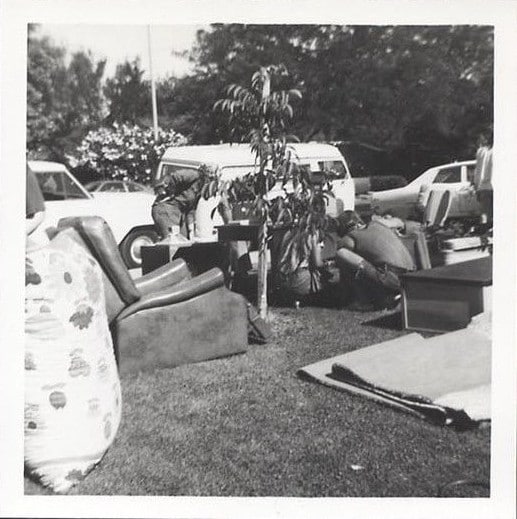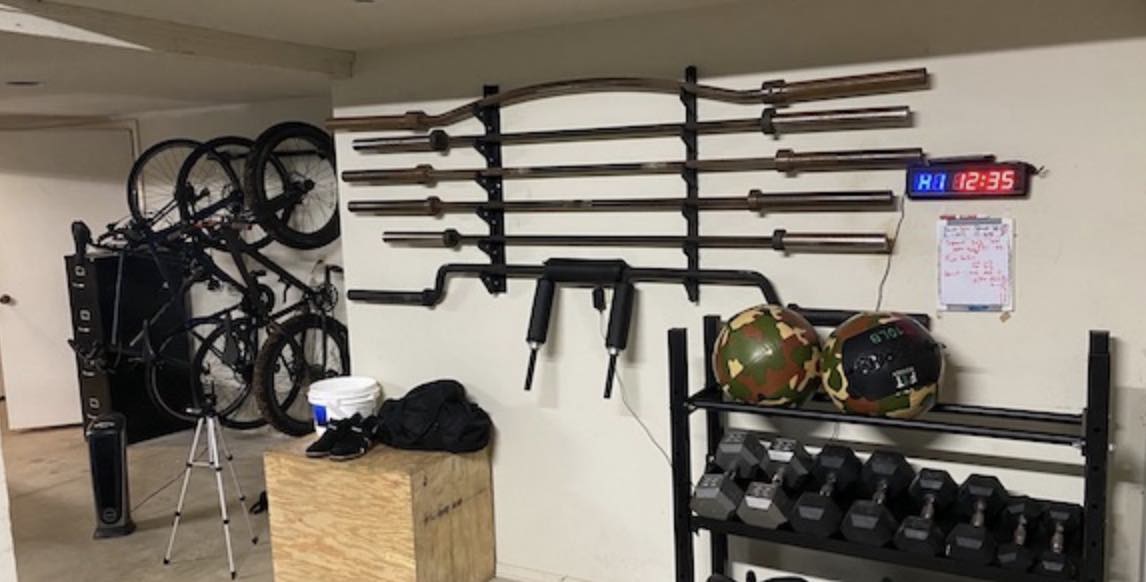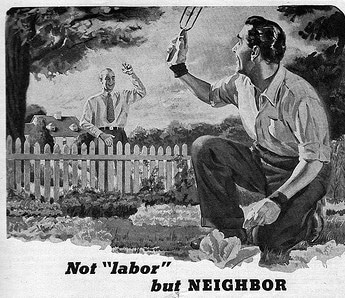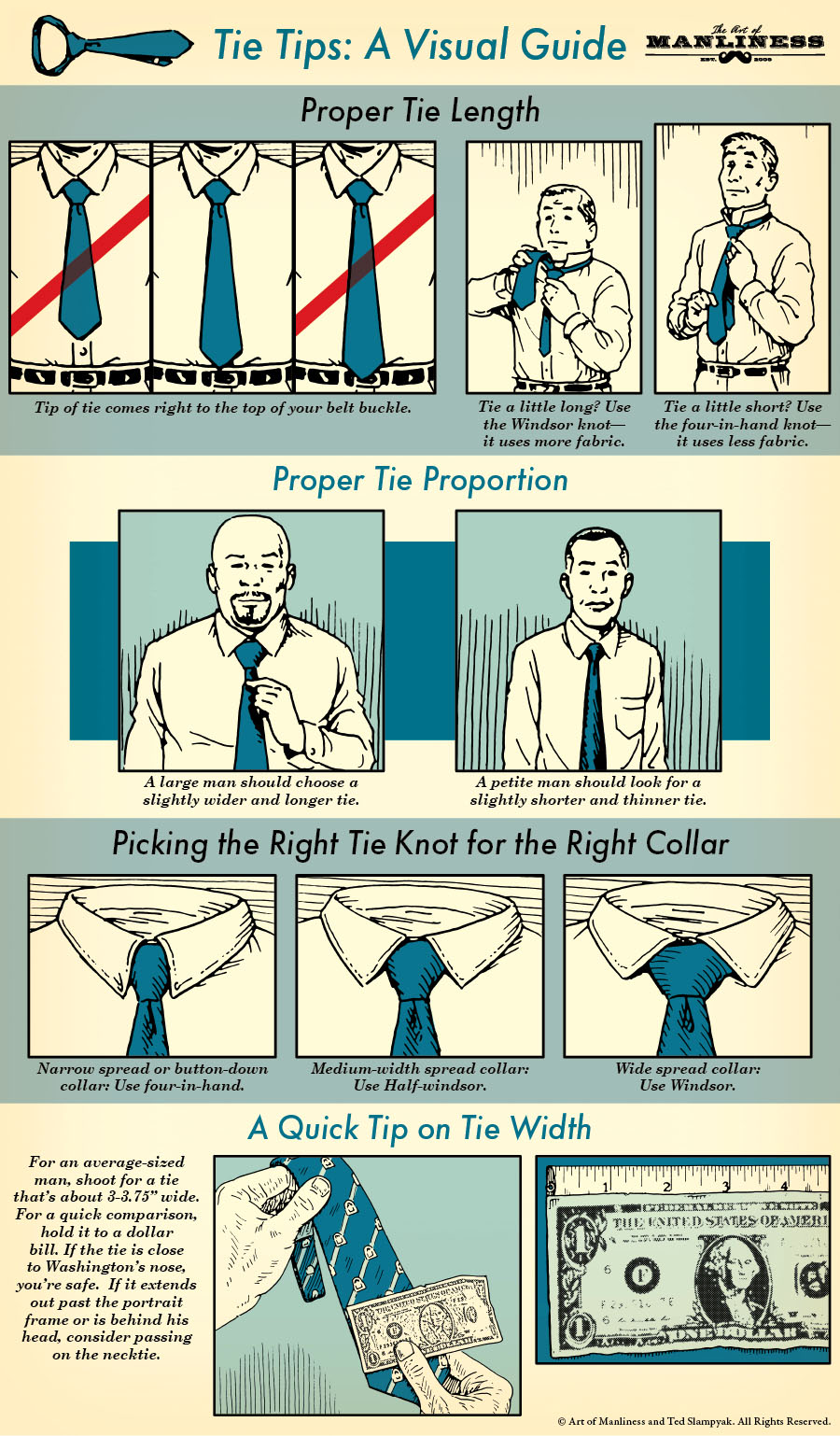
There’s nothing better than a garage sale to make some extra money and declutter your place. But what if you live in an apartment or condo and don’t have a garage?
Not a problem.
Thanks to the internet, you can have a garage sale without a garage by selling your stuff on Amazon, eBay, or Craigslist.
Kate and I did this on a regular basis when we lived in an apartment and were in serious debt pay-down mode. Every 6 months or so, we’d take a day to purge ourselves of stuff we no longer used. While most of it was crap and ended up in the garbage, every once in a while we’d find some great items (often well-meaning gifts we weren’t going to use) that could fetch a pretty penny on an online marketplace.
The money we made from our sale went right to paying down our debt. In some instances, were able to make an extra $500 in a month, which is a nice chunk of change when you’re making minimum wage at Jamba Juice (like we were).
Below is the general method for how we conducted what we called our “purge and profit.”
The Purge
Set aside a day for the purge. A thorough purging will take a good part of the day. Set aside a weekend where you can devote yourself completely to decluttering your house.
Create your declutter attack plan. Plan the order of the rooms you want to go through. Start off with some easy rooms to get you in the “declutter zone.” If the room has closets, start off with those before you move to the rest of the room. The same goes for cabinets and drawers — purge those first.
Create a “trash” bag, “sell” bag, and “donate” bag. Have separate bags or boxes for these three categories and sort as you go. Some items, like run-of-the-mill clothing, are better to donate than auction off online simply because they don’t sell that well. If it’s a piece of electronics or furniture that’s in pretty bad shape, don’t discard it just yet. Hobbyists are always looking for items like that to restore and repair. If you’re unsure, you can try selling first, and always get rid of it later.
Ask the “one year question.” If you’re not sure whether you should get rid of something, ask yourself, “Have I used this item in the last year?” If you haven’t, in the trash or donate bag it goes.
Finish a room before going on to the next one. Stay focused on one room at a time. If you try to purge more than one room at a time, you’ll overwhelm yourself and end up quitting before the job is done.
Chuck it or donate it. Take the trash bag and put it out with the garbage. Drop the donate bags to Goodwill. Ahhh…doesn’t that feel good?
Sort your sell collection. Certain items do better on certain platforms. Books, DVDs, and video games are best sold on Amazon; high-end clothing, collectibles, and smaller electronics do better on eBay; items that are too big to ship (like a weight set or a car) or generic items (like baby clothes or tools) are best for Craigslist. Sort your “sell” collection into groups based on where you’ll sell them: Amazon, eBay, or Craigslist.
The Profit
Now it’s time to sell your stuff. Here’s what has helped Kate and I get maximum profits from our online sales.
Open sellers accounts on Amazon, eBay, and Craigslist. Opening an account to sell on these platforms is easy. Just click the links below and follow the instructions.
- Amazon Sellers. You can connect your checking account to Amazon and when you make the sale, the money is deposited into your account. Amazon charges you a fee if your item actually sells. Different items have different percentages. For a complete schedule of their fees see here. Understand that with Amazon, it could take weeks or months before your item sells. You’re competing against a bunch of other people likely selling the same book.
- eBay. You can have your payment sent directly to your checking account or through your PayPal account. Because eBay owns PayPal they prefer that people use PayPal. eBay does charge you a small fee to list your item on the site and a fee based on the final value that your item sold for. For more information about eBay’s selling fees see here.
- Craigslist. They don’t charge you anything to list most items, and there are no transaction fees. For exceptions see here.
Know what you aren’t allowed to sell. The different online marketplaces have different guidelines for what you aren’t legally allowed to sell. It varies by state (and country), but you generally can’t sell alcohol, certain electronics (like radar jammers), any kind of service contract, certain weapons, animals, event tickets, and more. Click here to see eBay restrictions, here for Craigslist restrictions, and here for Amazon restrictions.
Research what similar items have sold for. For books or other media items that you’re selling on Amazon, look at what other products in similar condition are selling for. I’ve always had success pricing mine around the median — right between the highest and lowest. If you really want to move the product, err on pricing towards the low end.
For eBay, they have software that will actually find comparable items and give you ideas for pricing. In my experience, that number is usually a hair low. If you set too high a price, you obviously won’t get any bids. You can use eBay’s advanced search to see how items similar to yours have sold and the price they are auctioning for now.
Take into account the item’s condition when researching as well. If it has some dings and flaws, you should look to start the bid lower than other items.
One final factor is inventory — i.e., supply and demand. I was once able to sell a pair of boots at higher than retail price because there were only a few listed. The fewer listings there are, the higher you can sometimes set a price. This applies more to “normal” items; you may have a hard time selling super unique items in which the inventory is low, but so is demand.
Same goes for Craigslist. Search Craigslist for similar items and price it around there. If you’re having a hard time finding similar items — say you’re in a smaller, more rural market — you can always search eBay and set a price based on what similar items are going for there.
Consider selling in lots. If you want to move a number of items quickly, consider selling stuff in lots instead of separately. So rather than selling a bunch of vintage magazines individually, offer them as a collection. Sure, you might make less money than you would have selling them by themselves, but you’ll likely get rid of them faster.
Be thorough in your description. The more detail you put into the description of your item the more likely it will sell. Note how old your item is, how often it’s been used, and any flaws it might have. Even if your item has a few dings in it, people will buy it if you’re upfront in the description. It shows the buyer you’re an honest seller, and in the online selling game your reputation is your most important commodity.
Edit and proofread your description. Make sure to run a spell check and grammar check on your listing. It makes you look more legit and boosts that all-important reputation.
Include plenty of quality pictures of the item. Rather than just including one, feature several images from different angles. Make sure you show any flaws or dings the item might have. Again, if the flaw is minor, it shouldn’t hurt you. The picture of the flaw only shows you’re an honest seller.
Also, make sure your pictures look good. They don’t have to be professional, but they shouldn’t look like you took them on a flip-phone from 2002. We could devote an entire post on how to take better pictures (maybe we will in the future), but in the meantime here are some quick and dirty tips for taking pictures that don’t suck:
- Use a plain, uncluttered background. You want all the attention on your item, not on your messy nightstand in the background. White poster board makes for a great backdrop.
- Don’t use the flash; use natural lighting. Flashes can give your images a really harsh look and cause all sorts of shadows. Instead, opt for natural light.
- Fill the frame with the item. You want the item to take up about 80-90% of the frame. This gives buyers the best look possible.
- Take close-ups. People like to see the details. Do this even for any blemishes or damage your item may have.
For books on Amazon, you don’t need to worry about posting pictures. When you enter the book’s title, Amazon will generate a book cover image for you.
Be prompt in answering questions. If you get a question from a bidder or potential buyer, answer it quickly. It shows you’re serious about selling your item and only increases your reputation. Plus, it’s just plain courteous. You wouldn’t believe how many people lose business in the online selling game just because they lack responsiveness.
On eBay, set your starting bid low. Low starting bids attract more buyers. Of course you should base your bids on the demand for the item. If it’s a high-demand product, starting low shouldn’t hurt you because more people will be competing for it. If your product is in low demand and you think you won’t get many bids, set the starting price closer to what you actually want to get for the item. This is why researching is so important.
Many power sellers on eBay recommend not using a reserve price (the lowest price you’re willing to accept for your item) because it just adds a fee to your listing ($3) that you have to pay even if you don’t sell the item. Many also recommend just starting your bid at $.99, the thinking being that even if you sell it for much less than you wanted, it’s better than just having that item sit on your shelf making you no money at all.
It’s a tough call, but I always erred on starting low so I could just get rid of the item.
Create a stellar title for your eBay and Craigslist listings. The first thing people will see when searching for an eBay or Craigslist item is the title. When deciding how to title your item, think like a buyer. What would you type in the search box if you were looking for this item? Use that as the starting point. List things like brand, color, condition, designers, and size. Don’t use all caps or excessive punctuation or gimmicks (like “$1 iPhone!!!!!” when really you’re selling it for a few hundred). That just annoys people and makes you seem suspicious or a few bricks short of a load.
Run a 10-day listing on eBay. If you start the bid on Thursday and run a 10-day auction, your bid will end on the Sunday of the following week. That means your item will be up for two weekends. More people surf and make purchases on eBay on the weekends, so having greater exposure will definitely help increase the bids.
Set a deadline on Craigslist. To encourage actual buyers and not tire kickers, set a firm deadline in your Craigslist listing like, “Needs to be picked up Monday,” or something like that.
Be upfront with shipping and handling. Make it clear who’s paying for shipping and handling. One of the biggest scams people run on eBay is selling an item for super cheap, but then charging $15 for shipping. You’ll encourage bids if you’re clear about how much shipping will be.
Some people use the strategy of providing free shipping. Especially for higher-priced items, you’re probably making a profit anyway, and the free shipping will likely attract more buyers.
For bigger items that you’re selling on Craigslist, let people know that you expect them to come pick up the item. If they need you to deliver, be up front that you’ll charge a bit extra.
Don’t use eBay add-ons. I haven’t found them to be very helpful. If you follow the tips in this article, you shouldn’t have to use them.
Ship fast and package well. As soon as the item sells or your auction is over, head down to the post office and send the package off. If it’s a fragile or delicate item, wrap it really well. This isn’t a time to cut corners; if the item breaks, you may be responsible. Buyers will rate you, and how you handle shipping will be taken into consideration. Ship fast to earn positive feedback and boost your reputation!
What if the item doesn’t sell? If your item doesn’t sell, consider relisting it at a lower price. If it still doesn’t sell at the lower price, cut your losses and just donate the item to Goodwill. Make sure you get a receipt — you want to get that tax deduction after all!







